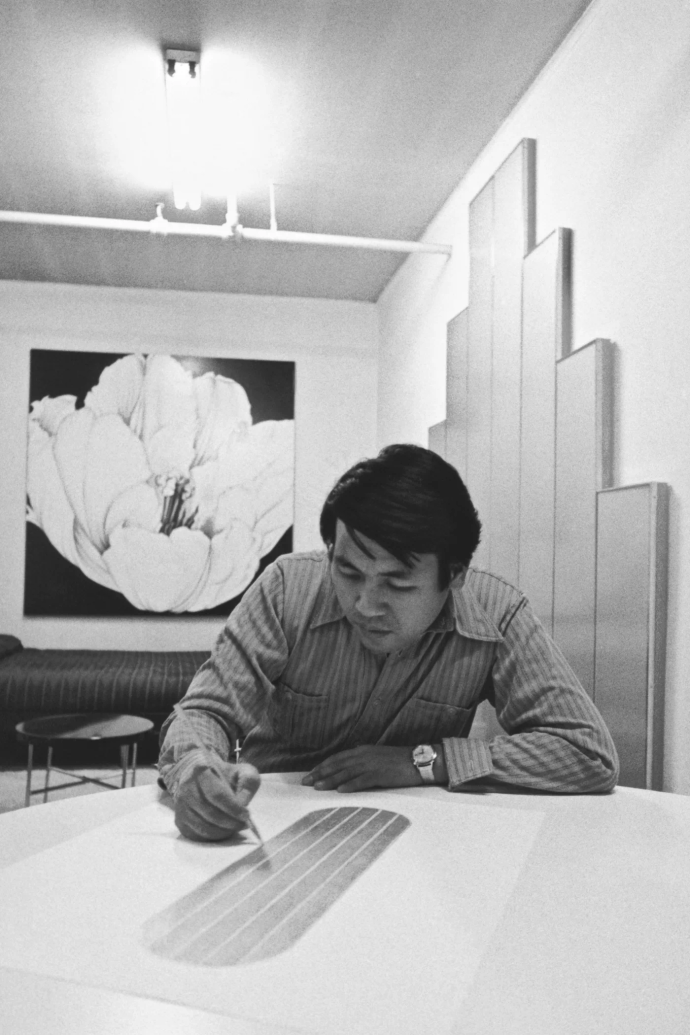
Tadaaki Kuwayama
Japanese Minimalist artist Tadaaki Kuwayama, renowned for his metallic monochromatic artworks that simultaneously evoke the noise of industry and the enduring serenity of eternity.
Biography of Tadaaki Kuwayama
Tadaaki Kuwayama, born in 1932 in Nagoya, Japan, graduated from the Tokyo National University of Fine Arts and Music in 1956, specializing in Nihonga, a traditional Japanese painting style. He and his wife, artist Rakuko Naito, moved to the United States in 1958, coinciding with the arrival of other Japanese artists such as Yayoi Kusama and Yoko Ono.
Upon settling in New York, Kuwayama diverged from both traditional Japanese painting and the dominant Abstract Expressionism movement of the time. Instead, he associated with Minimalist artists such as Dan Flavin and Donald Judd. Kuwayama soon developed his own unique reductive style, characterized by vibrant fields of paint arranged in horizontal and vertical compositions, as well as monochromatic canvases divided by slender chrome strips.
Kuwayama's work has been featured in numerous solo exhibitions at notable venues such as the Institute of Contemporary Art in Tokyo, Akira Ikeda Gallery in Nagoya, as well as locations in Ingolstadt, Germany, and the National Museum of Art. His art has also been showcased in group exhibitions at renowned institutions, including the Guggenheim Museum (notably the famous Systemic Painting exhibition in 1966), the San Francisco Museum of Modern Art, and the Carnegie Institute in Pittsburgh.
The artist has passed away in 2023.
Tadaaki Kuwayama's Art Style
Throughout the 1960s, Kuwayama honed his painting techniques and ventured into three-dimensional art, crafting painted wood-and-paper floor pieces and incorporating industrial materials to create works free from any discernible traces of the artist's hand. By 1965, he had largely abandoned paper as his medium of choice, transitioning to the use of spray paint. His works, often characterized by vibrant colors and glossy, varnished finishes, drew inspiration from materials commonly associated with the automobile manufacturing and aerospace industries, which played a significant role in his hometown. Simultaneously, their uniform colors, precise segments, and repetitive shapes conveyed a profound sense of tranquility.
Over the ensuing decades, Kuwayama expanded his artistic repertoire to encompass materials such as Bakelite, Mylar, and titanium. These materials added a certain hardness and luster to his art but did not diminish its inherent warmth. The artist remained dedicated to the use of pure color and form, excluding all other concerns, including any notions of hierarchy among colors that might inform the arrangement of a set of works.
The sense of tranquility and timelessness inherent in Kuwayama's body of work emanated from his conviction that his art should encapsulate a sense of existence.
Years:
Born in 1932
Country:
Japan, Nagoya, Aichi